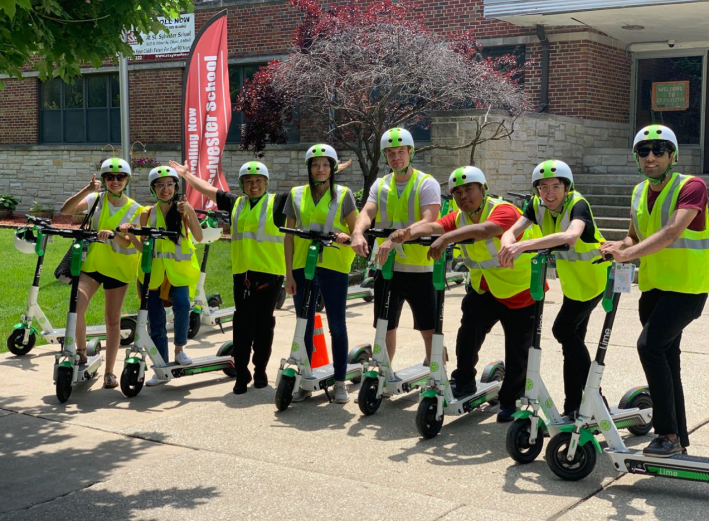Six-plus weeks after the July 15 launch of Chicago's four-month dockless electric scooter pilot, we are starting to see data about the technology's impact and reach in local communities. Lime, one of the ten scooter companies in the pilot, just released a one-month pilot report highlighting ridership data and other metrics.
According to the report, during the first month of the Chicago test, a total of 65,124 miles were ridden on Lime scooters, with a total time traveled of 751,242 minutes. The median distance was 1.1 miles with a median trip time of 12 minutes, which indicates that scooter riders may be seeking to use the devices for short commutes. According to their data, about 36 percent of trips start or end within an equity priority zone, one of the two quadrants of the West and Southwest side pilot area with limited or no Divvy bike-share access.
Lime surveyed Chicago scooter riders about their most recent trips and how they would have made the trips if they hadn't used a scooter. Using those responses, Lime calculated the percentage of trips that would have otherwise been made by car -- personal vehicle, car-sharing, taxi, or ride-hailing. (While many scooter trips seem to replace walking, biking, or transit trips, or are simply joy rides with no transportation purpose, the company claims their research has found that 36 percent of U.S. Lime scooter rides replace a car trip.)
They estimated that 12,194 car trips and 19,537 vehicle miles have been avoided in Chicago since the pilot launch, and 800 gallons of gas saved. However, that doesn't appear to factor in all miles driven and gasoline burned picking up scooters for charging and redeploying them every day. The rules of the Chicago pilot require all scooters to be taken off the streets between 10 p.m. and 5 a.m. to deter intoxicated riding and vandalism, and 25 percent of a company's fleet must be deployed in each of the two equity priority zones. To their credit, Lime is one of only three of the ten scooter companies, also including locally based VeoRide and Lyft (the Divvy concessionaire) that haven't been cited by the city for breaking pilot rules.
The report also highlights some community outreach and engagement efforts, including training 799 people on safe riding practices and distributing over 200 helmets to residents throughout the pilot area. Lime has also held 52 meetings with aldermen, and community organizations, and other stakeholders within the test zone.

Lime acknowledges that "in a recent study on scooter safety, it was noted that first-time riders may have a greater risk of injury due to a lack of experience with scooters." The federal study of scooter injuries in Austin, Texas, found that a third of injuries happened on a user's first ride. That jibes with my experiences riding scooters -- it seems like it would easy to crash when you're first getting the hang of riding a scooter. In Lime's report, they laud the the 11 First Ride Academy safety events they've held in Chicago, interactive hour-long safety sessions meant to educate riders on best practices to ride a scooter.
As the pilot winds down over the next two-and-a-half months, it will be important for each scooter company vying to remain in the city to release ridership data and other details on how their vehicles are being used. While we can’t solely rely on reports from the companies themselves for this info, the studies provide a snapshot of how scooters are being used, and also can inspire public discussions about how the scooter program is going. As someone who believes in encouraging alternatives to car-based transportation, I want to continue to evaluate the impact of scooters and other new modes.





